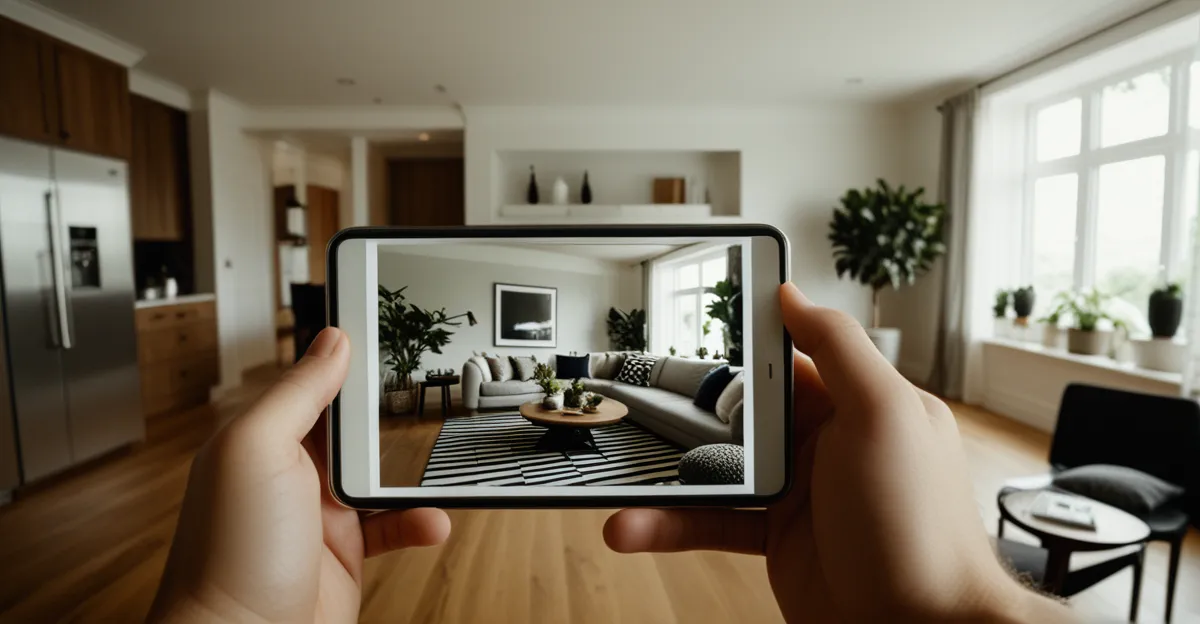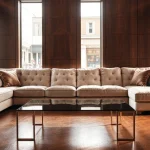Immediate Mistakes to Avoid When Decorating Your Home
In the journey of home decoration, common errors in decorating often arise from overlooked essentials and misjudgments. One of the most frequent is overlooking essential lighting choices. Adequate lighting affects not only the aesthetics but also the functionality of a space. For example, relying solely on overhead lighting can create harsh shadows, while neglecting ambient or task lighting reduces the room’s usability. Proper lighting layers enhance mood and highlight decor details effectively.
Another prevalent home decor mistake involves selecting furniture without regard for size or scale. Choosing pieces that are too large can overwhelm the room, making it feel cramped, while too small furniture may underutilize available space and lack presence. This mismatch disrupts the natural flow and balance of the room, detracting from overall harmony.
Also read : How Can Home Automation Revolutionize the Way We Live in the UK?
Lastly, excessive clutter and over-accessorizing is a pitfall often encountered by beginners. While accessories personalize a space, overdoing it leads to visual chaos rather than charm. Maintaining a curated approach ensures the home feels inviting yet organized. In summary, being mindful of lighting, furniture scale, and accessory volume forms the backbone of effective beginner home decorating tips to avoid early pitfalls.
The Impact of Poor Planning in Home Decor
Careful interior design planning is essential to avoid common setbacks in the home decorating process. One of the main challenges arises from the lack of a cohesive design plan. Without a clear strategy, homeowners may select mismatched furniture styles, conflicting colour schemes, or haphazard accessories, which undermine the room’s overall harmony. A thoughtful home decor strategy ensures that each element contributes purposefully to a unified theme, making the decorating process smoother and more satisfying.
This might interest you : How Can Small Space Living in the UK Influence Your Design Choices?
Ignoring the layout and flow of the room is another significant error. Effective planning examines how occupants move through the space and how furniture placement supports comfort and utility. Overcrowding pathways or placing furniture impractically disrupts natural movement and can create a cramped feeling, even in large rooms. By prioritizing circulation and accessibility during the home decorating process, the space becomes not just attractive but also functional.
Integrating a well-thought-out design plan minimizes surprises and costly adjustments later. It encourages deliberate choices aligned with lifestyle needs and aesthetic goals, ultimately enhancing the enjoyment and value of the home environment.
Common Mistakes with Colour and Materials
Choosing the right colours and materials is crucial, yet many fall into typical colour mistakes in home decor. One frequent error is selecting paint colours without considering the room’s lighting conditions. For example, a shade that looks warm and inviting in natural daylight may appear cold and dull under artificial lighting. This misjudgment often leads to regretful paint decisions that require costly repainting. To avoid such home paint errors, test paint samples at different times of day and under various lighting scenarios before finalizing your choice.
Another significant issue involves poor material combinations. Mixing mismatched textures or finishes can create visual discord and detract from a room’s harmony. For instance, pairing overly glossy surfaces with rough or matte materials without balance can feel jarring rather than complementary. Understanding how textures interact and strive for cohesion helps establish a unified aesthetic. Experimenting with a limited palette of materials aligned in style and finish promotes sophistication and avoids confusion.
Balancing colour and material choices requires attention to both function and feel. Emphasizing coordination rather than contrast, unless deliberately designed, supports the room’s flow and enhances the overall impact. Mastering these aspects is essential to sidestep common errors in decorating and elevate your space in line with effective beginner home decorating tips.
Furniture and Decor Placement Challenges
One of the most frequent home decor mistakes during the home decorating process is the tendency to push all furniture against the walls. While it may seem like an effective way to maximize space, this approach often disrupts the home balance and proportion, making rooms feel disconnected and oddly shaped. Instead, leaving some space between furniture pieces encourages natural interaction and creates a more inviting atmosphere.
Another common error is neglecting symmetry and balance when arranging decor. Symmetry doesn’t mean rigid uniformity but rather a thoughtful balance that enhances harmony and flow. For example, placing two matching lamps on either side of a sofa or balancing large art pieces with smaller complementary items helps establish visual stability. Ignoring these principles may result in spaces that feel uneven or chaotic, detracting from the room’s overall cohesion.
Good furniture placement tips focus on creating conversational groupings and ensuring clear walkways, which contribute to both aesthetics and function. Thoughtful arrangement respects the scale and style of each piece while enhancing comfort and usability. Using area rugs to define seating zones or floating furniture away from walls can transform a room’s feel, highlighting its best features. In summary, mastering furniture and decor placement is essential to achieving a well-balanced, cohesive home environment that reflects careful design consideration.
Skipping Personalisation and Function
Personalizing a space is often overlooked in the rush to achieve trendy aesthetics, leading to common errors in decorating that make homes feel impersonal and uncomfortable. One major mistake is decorating without reflecting your personality. A home should be a canvas that tells a story unique to its inhabitants. Ignoring personal tastes and interests can result in rooms that lack character and fail to resonate emotionally with those who live there.
Equally important is the balance between style and usability. Many beginners prioritize visual appeal over practical decorating considerations, which can compromise the functionality of the space. For example, selecting an elegant but uncomfortable sofa might enhance a room’s look yet discourage relaxation and everyday use. Functional interior design ensures that furniture and decor not only look good but also serve the needs of daily living efficiently.
Incorporating this balance involves thoughtful choices that marry personality with purpose. Here are some ways to avoid this home decor mistake:
- Choose decor items that express your interests, such as artwork or heirlooms, while maintaining harmony with the overall design.
- Opt for furniture that offers comfort and durability alongside appealing design.
- Incorporate flexible furnishings or multi-use pieces to maximize both style and function.
Mastering the art of personalizing home decor without sacrificing practicality leads to a space that feels welcoming and genuinely reflective of its owners. Prioritizing this approach transforms decorating from mere style selection into a meaningful, enjoyable process aligned with both aesthetic and lifestyle goals.
Solutions and Expert Tips for Avoiding Decor Pitfalls
Avoiding common home decor mistakes begins with a clear, deliberate approach empowered by practical strategies and expert decorating advice. One highly effective method is curating a detailed decor checklist before starting any project. This checklist serves as a guiding framework, ensuring that each choice aligns with style goals, functional needs, and spatial dynamics. It helps prevent impulsive decisions that commonly lead to errors in decorating, such as mismatched colours or improper furniture size.
Testing layouts and colours before making permanent commitments is another essential tip. For instance, experimenting with paint samples on different walls under varied lighting conditions can help avoid costly home paint errors. Similarly, using temporary furniture arrangements or digital room planners offers insight into spatial flow and balance. These measures reduce the risk of investing in pieces that don’t suit the room’s scale or harmony and promote a cohesive home decor strategy.
Finally, tapping into inspiration from professional designers provides valuable perspective and creative ideas. Observing current trends with an expert eye encourages homeowners to blend personal style with tested principles. This process supports informed choices that sidestep typical pitfalls. Implementing these home decor tips equips decorators, especially beginners, with confidence and clarity, paving the way for spaces that are both beautiful and functional.











